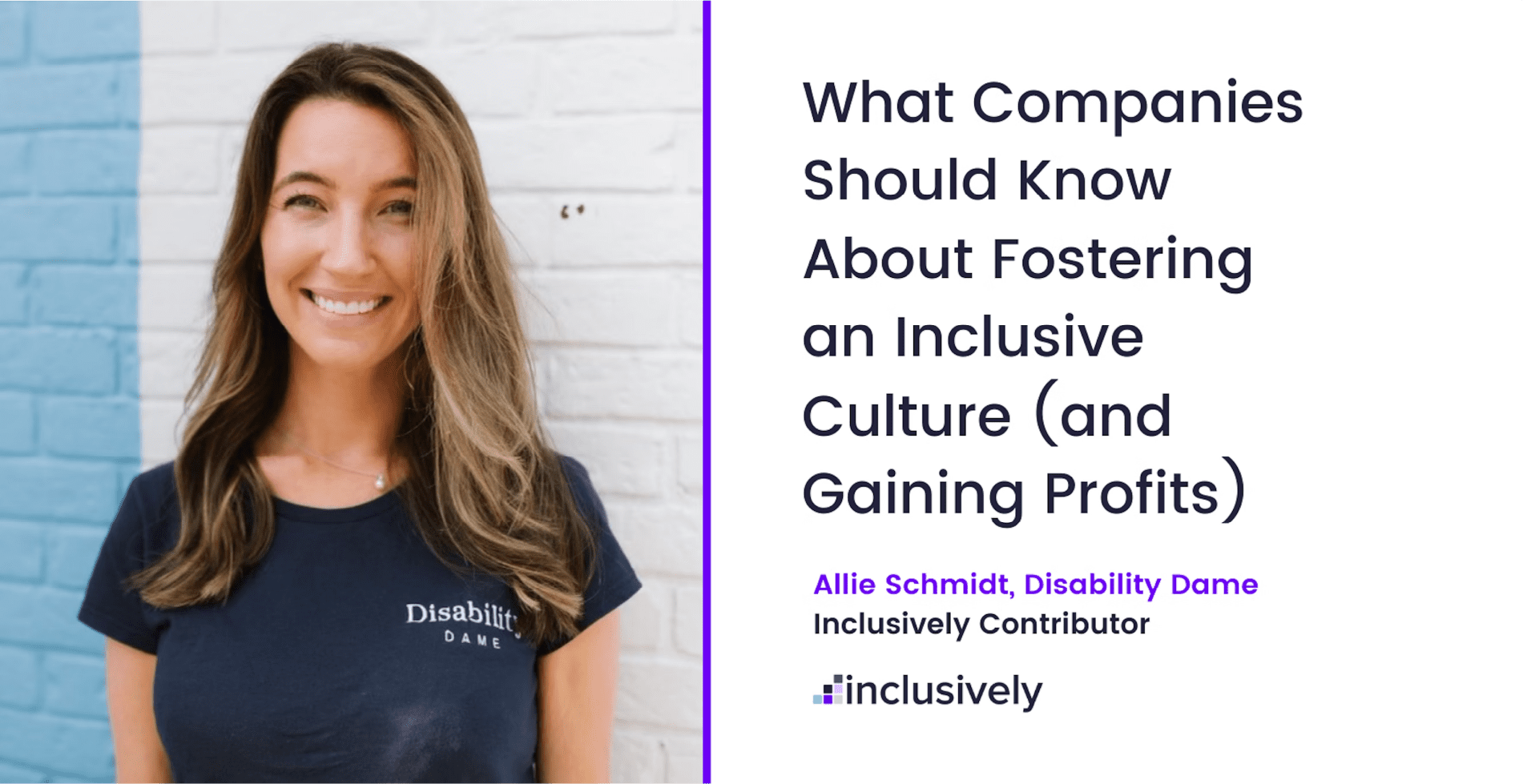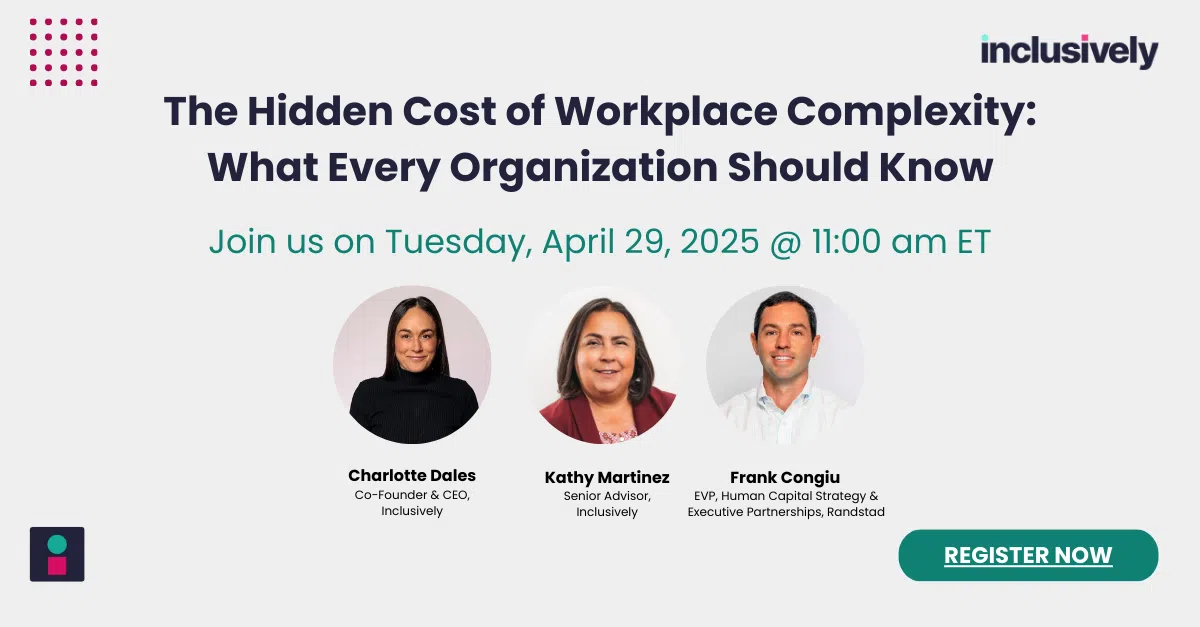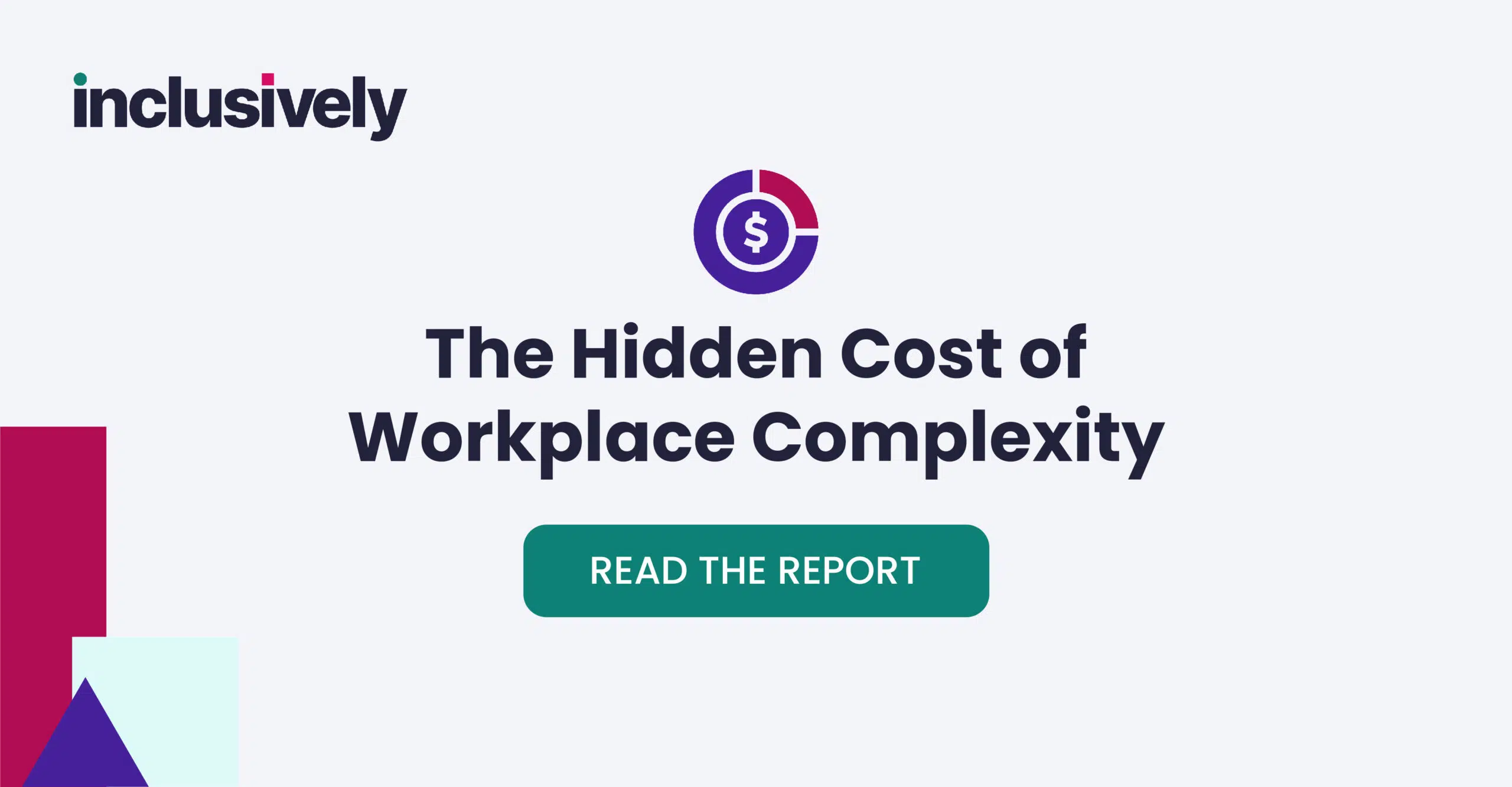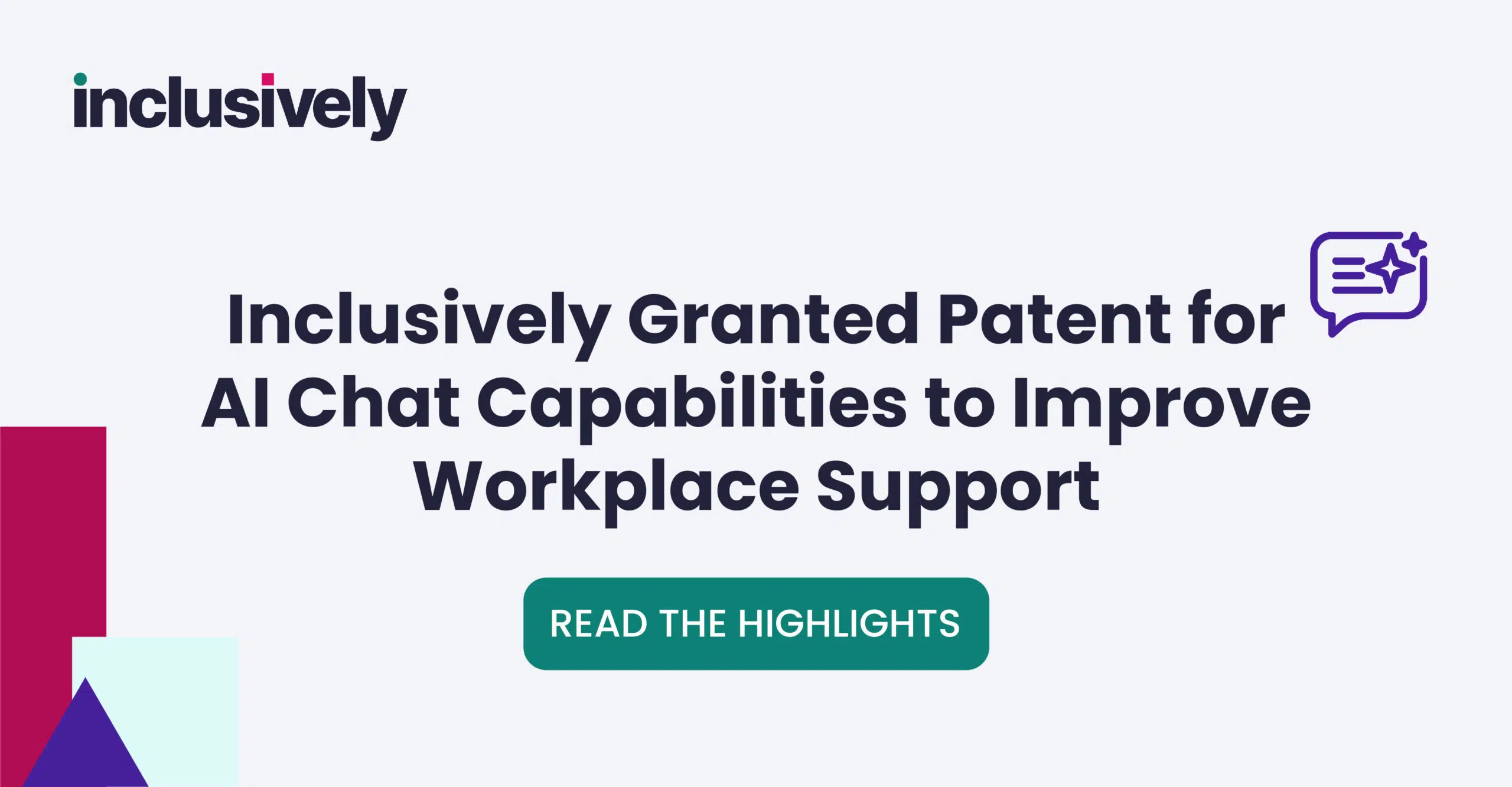In celebration of National Disability Employment Awareness Month, Allie Schmidt, founder of Disability Dame, shares how businesses can accommodate employees with chronic illnesses
At 24-years-old, I had my first interview for a marketing assistant role at a Fortune 500 company. During the meeting, my future manager asked: “Where do you see yourself in five years?”
I immediately replied, “working for Nike.”
So, it came as no surprise when a year into the job I applied for a promotion. This meant that I would leave my team to work for a new brand, a legendary sporting goods company that would give me the experience needed to fulfill my future goals.
However, my body had other plans.
While at the sporting goods company, it became difficult to type. Overnight, I went from training for half marathons to barely being able to lift a 5-lb weight at the gym. My motor skills were rapidly deteriorating. I started seeing doctors and soon realized that ALS was the likely answer.
SHIFTING PRIORITIES WITH A CHRONIC ILLNESS
Regardless of where I had envisioned myself professionally, I had to be practical about where my health was headed. Was it realistic for me to move to Oregon, thousands of miles from my family, when in just a couple of years I might be homebound and on SSDI?
My illness forced me to reassess my goals and what I would need in order to be successful. For instance, since my arms were becoming paralyzed, I would no longer be able to drive. As a result, my top priority became finding a company with a flexible work-from-home (WFH) policy.
The first thing I did was ask my current boss if the company would allow me to WFH a few days a week so that I didn’t have to make the 120-mile, daily commute.
She told me that if it was solely up to her, then she would allow it. However, it was company policy to deny all WFH requests.
I had no choice but to quit.
JOB SEARCHING WITH HEALTH CHALLENGES
Next, I applied for remote working positions. However, these jobs were virtually non-existent in 2018. I interviewed with excited recruiters who were impressed with my resume–but once I told them that I needed WFH, their enthusiasm quickly turned to silence.
My weakness was progressing, and I needed to find a job that would quickly suffice. I interviewed at a branding agency 20 minutes from my home. Although it didn’t align with my future goals, I didn’t have much of a choice. My health was abandoning me and so were my dreams.
During the interview, the manager told me that while WFH was not accepted under company policy, she allowed her direct reports to have a flexible work schedule. Basically, just don’t make it obvious and higher management doesn’t have to know about it.
I accepted the offer.
HIDING A DISABILITY AT WORK
Things were going great until I found out that our team would be moving downstairs to work under new management.
It was rumored that the office admin wrote down the times that everyone entered and left the building. If you got in at 8:01 AM, you might find an email asking why you were late.
During this time, I began experiencing tremendous anxiety. I was scared for the fate of my health. With my independence fleeting, every day I awoke to find a new ability that I had lost.
I was no longer able to: write anything down, hold the door open for a colleague, carry my lunch from the microwave to a table, use the copy machine, key in the PIN code for my ID badge, point to things in a presentation, button my pants after using the restroom, type on a keyboard and answer the office phone.
I could go on and on, but I think you get the picture…
What’s more, I was becoming disabled and no one outside of my immediate team knew about it.
As the lowest man on the totem pole, I was in a unique position within the company where I had no rights or influence — and management made sure that I was aware of this insignificance daily.
I felt like I was forced to hide my disability for fear that it would make colleagues and c-suite professionals uncomfortable. There was never a time when I felt empowered to ask for what I needed.
THE BREAKING POINT
The company didn’t have enough space to keep up with employee growth. So, when we moved downstairs, the marketing department’s desks were crammed side-by-side, separated by only a couple of feet.
This had huge and anxiety-inducing repercussions for me.
My arms were almost completely paralyzed at this point, so I had to speak into my computer in order to type. In a larger cubicle, this wasn’t a big deal. However, at our new desks, I disrupted my neighbors (which, in hindsight, shouldn’t have been my concern, but I was still trying to hide my disability).
The smaller desk also meant that I could no longer eat while sitting at my computer. Since my table manners are atrocious, not being able to eat in privacy was a huge fear of mine.
The breaking point came one day when I was pregnant and dropped my lunch while trying to get it out of the microwave. I wasn’t able to buy snacks from the kiosk, because I couldn’t swipe the credit card. As a result, I went an entire day without eating while pregnant. This is when I realized that working had become a risk to my health.
Again, with no options available, I was forced to quit.
PREVIOUSLY IMPOSSIBLE ACCOMMODATIONS BECOME UNIVERSAL
In an ironic turn of events, three months after I quit, a pandemic breaks out across the world and WFH becomes the only solution to keeping the economy alive.
Suddenly, the very thing that no company said they could accommodate, becomes universally achievable. It’s almost as if WFH was doable all along, except that companies found excuses to make it feel insurmountable for their disabled and chronically ill employees.
The truth is that people with disabilities have been forced out of the job market because companies don’t facilitate an environment where employees feel empowered to ask for what they need. Essentially, we don’t feel supported, so we stay silent and neglect our needs until we feel like there’s no other choice but to stop working and apply for government assistance.
In 2020, Accenture conducted the global study Getting to Equal 2020: Disability Inclusion and found a perception gap between what leaders think is happening and what employees with disabilities think is the reality [1]. They then took this data and calculated the impact of improving workplace culture on the engagement levels of persons with disabilities and on companies’ potential for growth.
Not surprisingly, even though the report found that inclusive organizations could potentially increase engagement levels of employees with disabilities by 1.5x [2], it concluded that “only 20% of employees with a disability feel the organization is fully committed to supporting them [3].”
What Does This Mean for Employers?
Studies have shown that engaged employees produce better business outcomes than their non-engaged counterparts [4]. Regardless of industry, company size, or nationality, employee engagement remains a crucial strategy for growth.
The Accenture study corroborated these results by finding that “Companies led by executives who are focused on disability engagement are growing sales (2.9x), and profits (4.1x) faster than their peers [5].”
Simply put, companies may be missing out on profits by failing to engage their employees with disabilities.
How Can Businesses Accommodate Employees with Chronic Illness?
We know that nurturing an inclusive culture helps lead to more engaged employees and a better bottom line, but how can companies put this into action?
- Offer Flexible Hours – The amount of energy it takes just to survive with a chronic illness is unimaginable to those who’ve never experienced it. Don’t set strict office work hours. Trust that your employees are capable of getting the work done when they say they will. Create a flexible work schedule that meets both of your needs.
- Don’t Make Employees use PTO for Doctor’s Appointments (Including Mental Health) – Chronic illness often comes with many doctor’s appointments during regular work hours. Make sure your employee feels comfortable taking time away for these appointments. Don’t make someone use PTO for something they can’t help (it’s OK to ask for doctor’s notes) and offer options for when they can make up the work.
- Create a Game Plan in the Event of a Flare – Most chronic illnesses fluctuate. Devise a plan on what will happen if your employee experiences a flare-up.
- Allow Remote Work – As we’ve seen during the pandemic, remote work is a viable option for getting work done. Offer your employees a remote working schedule, as this will incentivize them to work rather than take PTO during times they can’t make it into the office. As a bonus, full-time remote work will give you a larger pool of potential candidates from around the country, meaning that you have access to top-tier talent.
- Don’t Mandate Company Parties – Don’t penalize employees for not attending company outings or parties. By the end of the day, most people with chronic illnesses are doing everything they can to get by with what little energy they have left. Don’t make them feel guilty for turning down an invitation.
- Don’t Mandate Business Attire (Unless Necessary) – Most business attire is uncomfortable and, frankly, has no influence over how well you do your job. Don’t make your employees wear professional business clothing if they’re not interacting with clients.
- Be Intentional About Physical Work Environment – Don’t assume that everyone can handle the same physical work environment. Employees with chronic illnesses often deal with pain or even flareups due to temperature changes. Ask your employee how you can make their work environment more comfortable for them.
The most important thing that you can do to accommodate a chronically ill or disabled employee is to simply ask them what they need. Maintain an open line of communication and trust that they know what is best for their health. Creating a space for them to express their needs without feeling judged is the best thing that you can do to help your employee feel heard and, ultimately, engaged.
I’m hopeful that the pandemic will spur a new generation of disabled and chronically ill employees – one that shows companies what’s possible when their talent feels supported, valued, and accommodated.
Sources:
1 “Getting to Equal 2020: Disability Inclusion”; Accenture (2020); pg. 3 via https://www.accenture.com/_acnmedia/PDF-142/Accenture-Enabling-Change-Getting-Equal-2020-Disability-Inclusion-Report.pdf
2 “Getting to Equal 2020: Disability Inclusion”; Accenture (2020); pg. 13 via https://www.accenture.com/_acnmedia/PDF-142/Accenture-Enabling-Change-Getting-Equal-2020-Disability-Inclusion-Report.pdf
3 “Getting to Equal 2020: Disability Inclusion”; Accenture (2020); pg. 10 via https://www.accenture.com/_acnmedia/PDF-142/Accenture-Enabling-Change-Getting-Equal-2020-Disability-Inclusion-Report.pdf
4 “The Right Culture: Not Just About Employee Satisfaction”; Gallup® (2017) via https://www.gallup.com/workplace/236366/right-culture-not-employee-satisfaction.aspx
5 “Getting to Equal 2020: Disability Inclusion”; Accenture (2020); pg. 15 via https://www.accenture.com/_acnmedia/PDF-142/Accenture-Enabling-Change-Getting-Equal-2020-Disability-Inclusion-Report.pdf
To connect and continue this conversation, join me on Inclusively’s Community Portal, created for their network of job seekers, employers, and partners to discuss disability employment topics and share ideas: https://www.inclusively.com/community/topics/employer-tips
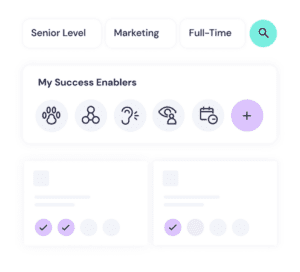
Overview of a candidate’s job search indicators, including Senior Level, Marketing, Full-Time, My Success Enablers with a row of icons.
How Inclusively Works
Inclusively’s accessible employment platform and job matching technology goes beyond traditional search criteria and allows candidates to connect with opportunities that match their experience, skills, and workplace accommodations – called Success Enablers. Examples include screen readers, noise-canceling headphones, an emotional support animal, accessible parking and entrances, braille signage, and dozens more.
